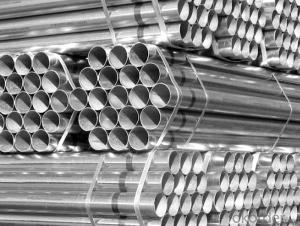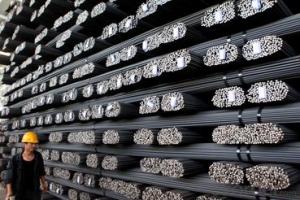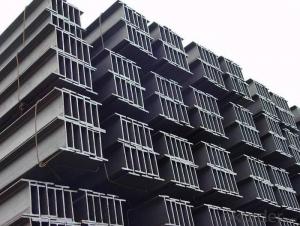Steels Manufacture Building Material with Good Quality
- Loading Port:
- Tianjin
- Payment Terms:
- TT OR LC
- Min Order Qty:
- 100 m.t
- Supply Capability:
- 1000 m.t/month
OKorder Service Pledge
OKorder Financial Service
You Might Also Like
1.Packaging & Delivery
Packaging Detail: | in bundles or as customer's requirement |
Delivery Detail: | Within 30days after receiving your deposit or copy of L/C |
2.Specifications
HRB400,HRB500 Steel Rebars
1.China direct supplier
2.Best service
3.Competitive price
4.Quantity assured
3.Product Description
Name | High Tensile Export Reinforcing Steel Bar ,Deformed Steel Bar ,HRB400B,HRB,46B,HRB500 Building Construction Material |
Standard | ASTM A615 /BS BS 4449 /GB HRB/ JIS G3112 |
Grade | A615 Gr40/60/75 BS 4449 Gr460,B500 GB HRB335,HRB400 ,HRB500
JIS G3112 SD390
|
Diameter | 6mm-40mm |
Length | 6-12m |
Technique | Low temperature hot-rolling reinforcing deformed steel rebar |
Tolerance | As the standard or as your requirement |
Application | Building, construction, road, bridge,etc |
Certificated | BV |
MOQ | 500tons per size steel rebar |
Packing details | Steel rebar packed in bundle or as your requirement |
Delivery | Within 30 days after deposit |
Payment | T/T or L/C |
4.Chemical Composition
Grade | Technical data of the original chemical composition (%) | |||||||
C | Mn | Si | S | P | V | |||
HRB400 | ≤0.25 | ≤1.60 | ≤0.80 | ≤0.045 | ≤0.045 | 0.04-0.12 | ||
Physics capability | ||||||||
Yield Strength(N/cm2) | Tensile Strength(N/cm2) | Elongation (%)
| ||||||
≥400 | ≥470 | ≥14 | ||||||
Grade | Technical data of the original chemical composition (%) | |||||||
C | Mn | Si | S | P | V | |||
HRB500 | ≤0.25 | ≤1.60 | ≤0.80 | ≤0.045 | ≤0.045 | 0.04-0.12 | ||
Physics capability | ||||||||
≥500 | ≥630 | ≥12 | ||||||
5. Theorectical weight
Diameter (MM) | Cross Sectional Area (MM2) | Theorectical Weight (KG/M) | Weight of 12M Bar (KG) | A Ton Contains 12M Bars (PCS) |
6 | 28.27 | 0.222 | 2.664 | 375.38 |
8 | 50.27 | 0.395 | 4.74 | 210.97 |
10 | 78.54 | 0.617 | 7.404 | 135.06 |
12 | 113.1 | 0.888 | 10.656 | 93.84 |
14 | 153.9 | 1.21 | 14.52 | 68.87 |
16 | 201.1 | 1.58 | 18.96 | 52.74 |
18 | 254.5 | 2 | 24 | 41.67 |
20 | 314.2 | 2.47 | 29.64 | 33.74 |
22 | 380.1 | 2.98 | 35.76 | 27.96 |
25 | 490.9 | 3.85 | 46.2 | 21.65 |
28 | 615.8 | 4.83 | 57.96 | 17.25 |
32 | 804.2 | 6.31 | 75.72 | 13.21 |
36 | 1018 | 7.99 | 98.88 | 10.43 |
40 | 1257 | 9.87 | 118.44 | 8.44 |

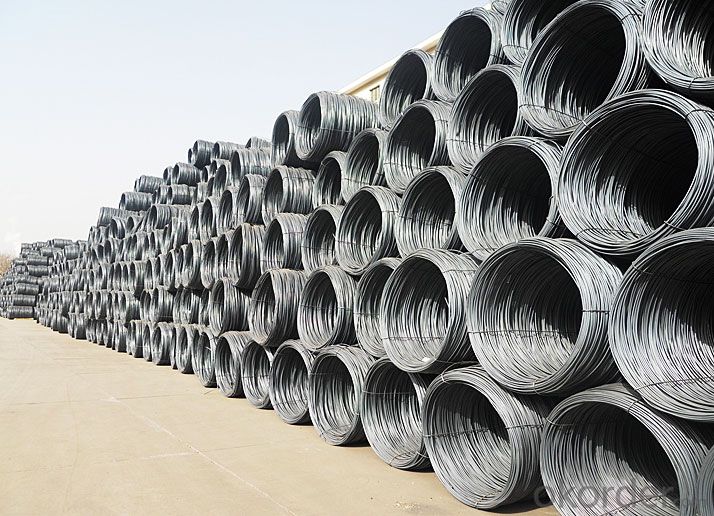
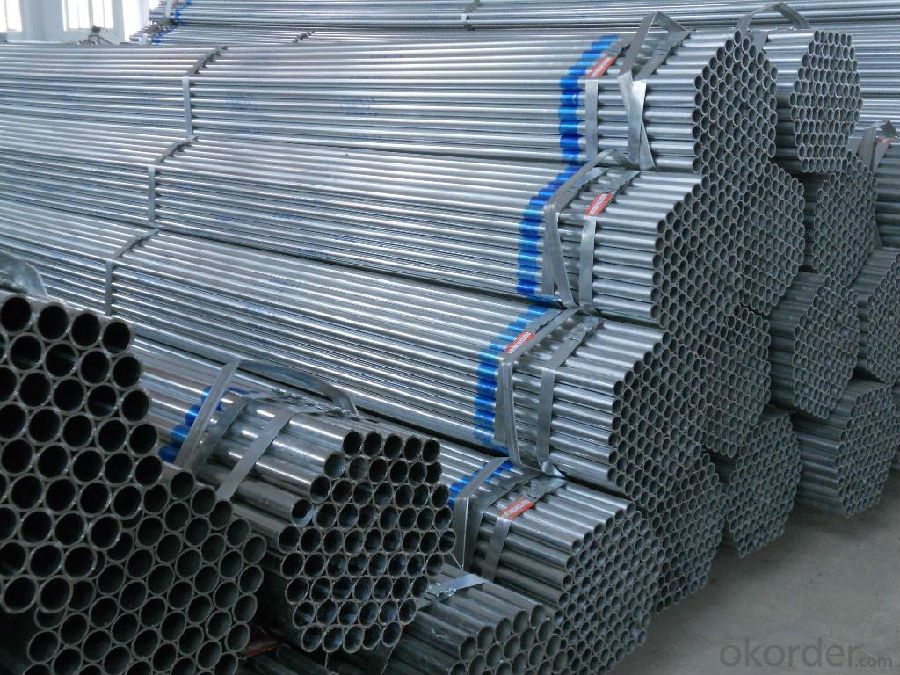
- Q:How are steel pipes tested for quality control?
- Steel pipes are tested for quality control through various methods such as visual inspection, dimensional checks, non-destructive testing, and mechanical testing. These tests ensure that the pipes meet the required standards and specifications, ensuring their structural integrity and performance.
- Q:What's the actual size of the DN25?
- DN25 refers to the theoretical size of the inner hole of the pipe. That is to say, the theoretical dimension of the inner diameter of the pipe is 25 (the metric tube refers to the inner diameter, and the English tube is also to indicate the inner diameter, for example: 3/8, the inner diameter is 9.525, and the diameter of the 1/2 is 12.7, and the diameter of the 5/8 is 15.875). The outer diameter is theoretical in diameter, plus the wall thickness specified by the state (which is artificially specified and has no formula)The theoretical diameter of DN25 is 25, and the outer diameter is Phi 33.7 and phi 32(but there is also the outside diameter of the mark. The mark is: the outer diameter * wall thickness, such as: 32 * 2, that is to say, the outer diameter is 30, the inner diameter is 26)
- Q:What are the common factors affecting the lifespan of steel pipes?
- The common factors affecting the lifespan of steel pipes include corrosion, external damage or impact, poor installation or maintenance practices, and exposure to extreme temperatures or harsh environments.
- Q:What materials are used in scaffolding pipes?
- Safety net with dense green net, safety net of flame retardant standards GB, and safety net of flame retardant performance detection for lighter lit mesh 12 seconds after leaving the fire, flame retardant, continued burning of not more than 4S. The application of 9MM safety net rope, rope, nylon rope woven, each network should be able to withstand the impact of the national standard 1.6KN test.
- Q:Can steel pipes be used for conveying gases?
- Yes, steel pipes can be used for conveying gases. Steel pipes are commonly used in various industries, including oil and gas, petrochemical, and construction, for transporting various types of gases such as natural gas, air, and hydrogen. Steel pipes offer several advantages for gas transportation. They are strong and durable, able to withstand high pressure and temperature conditions. Steel pipes also have excellent resistance to corrosion and can effectively prevent gas leakage, ensuring the safety and reliability of the gas transportation system. Additionally, steel pipes have a smooth internal surface, which minimizes the frictional resistance and allows for efficient gas flow. Overall, steel pipes are a reliable and widely-used option for conveying gases in various applications.
- Q:What are the different methods of repairing steel pipes?
- There are several methods of repairing steel pipes including welding, pipe wrapping, epoxy lining, and pipe bursting. Welding involves joining the broken sections of the pipe using heat and a filler material. Pipe wrapping involves applying a layer of epoxy or fiberglass wrap around the damaged area to reinforce and seal it. Epoxy lining involves applying a coating of epoxy resin on the interior of the pipe to prevent corrosion and restore structural integrity. Pipe bursting is a more invasive method where a new pipe is pulled through the existing damaged pipe, breaking it apart and replacing it in the process.
- Q:How are steel pipes used in the manufacturing of shipbuilding and offshore structures?
- Steel pipes are a necessity when it comes to manufacturing shipbuilding and offshore structures. Their strength, durability, and resistance to corrosion make them the perfect choice for the challenging marine environment. When it comes to shipbuilding, steel pipes serve various purposes. They are primarily used in constructing the hull, which provides structural support to the ship. Steel pipes are responsible for forming the keel and frames, ensuring the hull's shape and strength. By welding these pipes together, a strong and rigid structure is created, capable of withstanding the forces experienced during navigation. Additionally, steel pipes find use in constructing different systems aboard the ship. They are essential components of the piping system, responsible for transporting fluids like fuel, water, and oil throughout the vessel. Furthermore, steel pipes contribute to the ventilation and air conditioning systems, guaranteeing proper airflow and temperature control within the ship. In offshore structures, such as oil rigs and platforms, steel pipes play a vital role. These structures endure extreme environmental conditions, including severe weather, high pressure, and corrosive saltwater. Steel pipes are instrumental in fabricating load-bearing components like legs and risers. Their strength and stability allow the structure to withstand the forces of waves, wind, and drilling operations. Moreover, steel pipes are crucial in constructing subsea pipelines. These pipelines facilitate the transportation of oil, gas, and other fluids from offshore drilling sites to onshore facilities. Steel pipes are preferred due to their high tensile strength and ability to withstand the high pressure and corrosive conditions found in subsea environments. Overall, steel pipes are indispensable in the manufacturing of shipbuilding and offshore structures. Their exceptional strength, durability, and corrosion resistance make them the preferred choice for constructing hulls, systems, and load-bearing components. Without steel pipes, the construction of ships and offshore structures would compromise safety, reliability, and longevity.
- Q:How do you protect steel pipes from rusting?
- There are several ways to prevent rusting in steel pipes. One common method involves applying a protective coating to the pipes. This can be done using paint or other coatings specifically designed for metal surfaces. The coating acts as a barrier between the steel and the elements, stopping moisture and oxygen from reaching the metal and causing rust. Another method is to galvanize the steel pipes. This involves coating them with a layer of zinc, which creates a protective barrier against rust. Galvanizing is often used for outdoor applications or in environments with high moisture levels. Regular maintenance is also important for preventing rust. It is necessary to inspect the pipes for corrosion or damage and address any issues immediately. Keeping the pipes clean and dry can also help prevent rust formation. In some cases, sacrificial anodes can provide additional protection. These anodes, made of zinc or magnesium, are attached to the steel pipes. They corrode instead of the steel, sacrificing themselves to protect the pipes from rust. Proper storage and handling of steel pipes are crucial as well. They should be stored in a dry, well-ventilated area, away from moisture and humidity. Care should be taken to avoid scratching or damaging the protective coatings when handling the pipes. By implementing these methods and practices, steel pipes can be effectively safeguarded against rust, ensuring their longevity and durability.
- Q:How are steel pipes used in the construction of underground parking garages?
- Steel pipes are used in the construction of underground parking garages for various purposes, including providing structural support, serving as conduits for utilities such as water and electricity, and facilitating drainage systems. They are often used as deep foundation elements to support the weight of the structure and the vehicles above. Additionally, steel pipes are commonly used for installing fire suppression systems, ventilation systems, and plumbing connections within the parking garage.
- Q:Can steel pipes be used for conveying solid materials?
- Yes, steel pipes can be used for conveying solid materials. Steel pipes are known for their high strength and durability, making them suitable for transporting solid materials such as ores, grains, or construction materials. They are commonly used in industries such as mining, agriculture, and construction for this purpose.
1. Manufacturer Overview |
|
|---|---|
| Location | |
| Year Established | |
| Annual Output Value | |
| Main Markets | |
| Company Certifications | |
2. Manufacturer Certificates |
|
|---|---|
| a) Certification Name | |
| Range | |
| Reference | |
| Validity Period | |
3. Manufacturer Capability |
|
|---|---|
| a)Trade Capacity | |
| Nearest Port | |
| Export Percentage | |
| No.of Employees in Trade Department | |
| Language Spoken: | |
| b)Factory Information | |
| Factory Size: | |
| No. of Production Lines | |
| Contract Manufacturing | |
| Product Price Range | |
Send your message to us
Steels Manufacture Building Material with Good Quality
- Loading Port:
- Tianjin
- Payment Terms:
- TT OR LC
- Min Order Qty:
- 100 m.t
- Supply Capability:
- 1000 m.t/month
OKorder Service Pledge
OKorder Financial Service
Similar products
New products
Hot products
Related keywords
